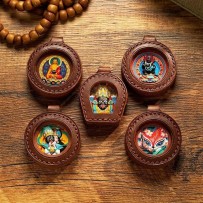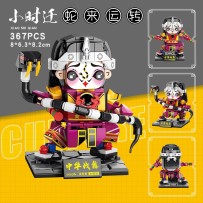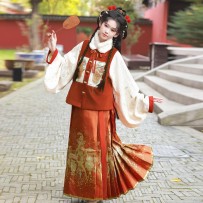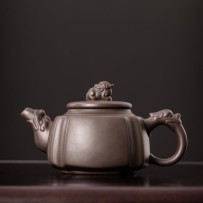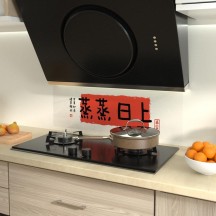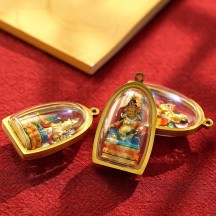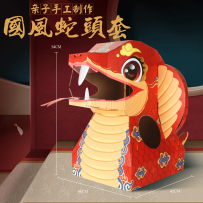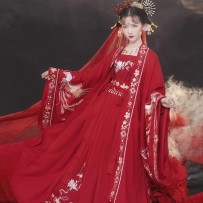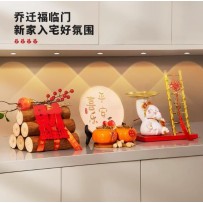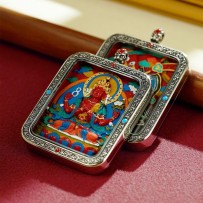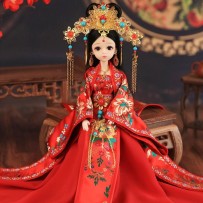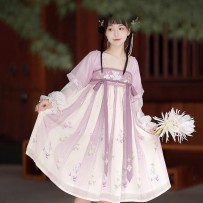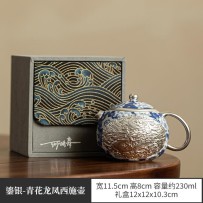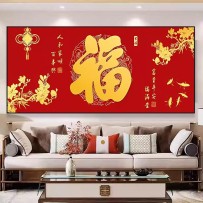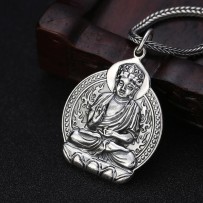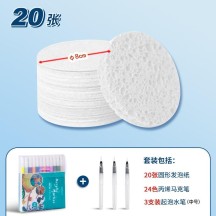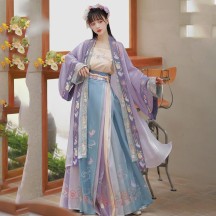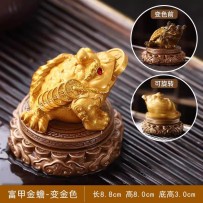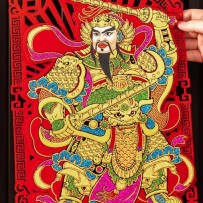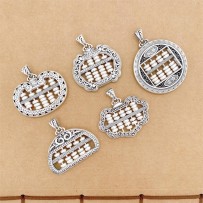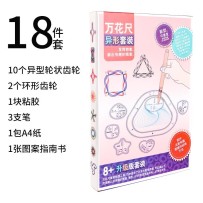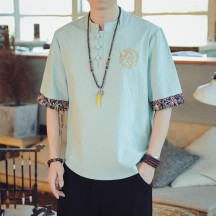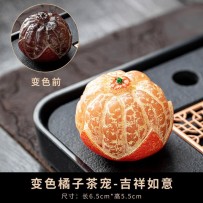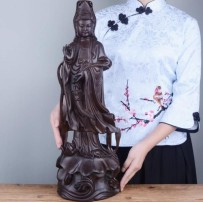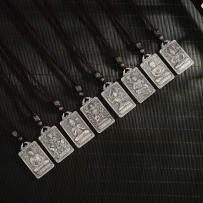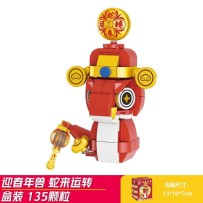Teapots, teacups, and other vessels are the soul of tea brewing. The teapot, as the centerpiece of the tea set, holds both tea leaves and water to steep the tea. Teapots come in a wide variety of shapes and designs, offering both practical functionality and artistic value, enhancing the overall atmosphere and enjoyment of tea appreciation. A good teapot is heat-resistant and retains warmth, allowing the essence of the tea to infuse quickly into the water, releasing its full aroma and showcasing the charm of fine tea to the fullest.
Subcategories
Active filters
- Availability: In stock
The Five Gods of Wealth represent the good wishes and expectations of welcoming good fortune and blessings.
Tangka refers to a unique scroll painting in Tibetan Buddhism, which mainly contains the biography of Buddha, various Buddha images, religious history, and images of various patriarchs. Most of them are painted on cloth, silk or paper, and then mounted with colored satin. It is a necessary item for Buddhists to worship and practice at any time.
Hanfu carries rich cultural significance, embodying the traditional aesthetics, etiquette, and cultural values of the Chinese nation. It is not just clothing, but an important symbol of Chinese heritage—representing history, culture, and a sense of national identity.
One of the prized clay materials used in Zisha teapots has a jade-green hue, excellent breathability, and a delicate texture that feels as smooth as a baby's skin. After regular use and proper seasoning, it develops a rich patina. It is renowned for its qualities, described as “as hard as iron, as fluid as water, as smooth as jade, and as resonant as a bell.”
Tangka refers to a unique scroll painting in Tibetan Buddhism, which mainly contains the biography of Buddha, various Buddha images, religious history, and images of various patriarchs. Most of them are painted on cloth, silk or paper, and then mounted with colored satin. It is a necessary item for Buddhists to worship and practice at any time.
Hanfu carries rich cultural significance, embodying the traditional aesthetics, etiquette, and cultural values of the Chinese nation. It is not just clothing, but an important symbol of Chinese heritage—representing history, culture, and a sense of national identity.
A teapot is the perfect companion for brewing tea—serving one tea with one pot symbolizes loyalty, devotion, and family harmony in traditional culture. Therefore, gifting tea and a teapot during festive occasions is more than just a gesture; it conveys cultural heritage and refined taste. Giving teaware is a sign of respect, making it an ideal gift for leaders, elders, or clients.
Tangka refers to a unique scroll painting in Tibetan Buddhism, which mainly contains the biography of Buddha, various Buddha images, religious history, and images of various patriarchs. Most of them are painted on cloth, silk or paper, and then mounted with colored satin. It is a necessary item for Buddhists to worship and practice at any time.
Hanfu carries rich cultural significance, embodying the traditional aesthetics, etiquette, and cultural values of the Chinese nation. It is not just clothing, but an important symbol of Chinese heritage—representing history, culture, and a sense of national identity.
Porcelain body with silver gilding — the fusion of ceramic and silver creates a unique tea vessel, weaving together the wisdom of artisans passed down through millennia. Elegant yet practical, it feels like a serendipitous encounter. Crafted from clay and silver, it embodies both tradition and innovation.
The style has been processed through eight color processes, with clear details and high-definition stereoscopic image quality
The twelve zodiac guardian gods, also known as the natal Buddha, the eight guardian gods, the twelve guardian deities, and the eight-body Buddha, are the twelve zodiac guardian gods of Japanese Esoteric Buddhism through the heavenly stems, earthly branches, the twelve causes and conditions, and the five elements.
Using this material kit is very simple. First, choose a sheet of textured foam painting paper. Then, press on it with your fingers or tools to create different textured effects. Next, outline the design with a marker, and fill in the colors using watercolor paints — and a beautiful artwork is complete! 🌈 Whether it's a simple animal pattern or a more complex landscape, kids can easily get started and enjoy the fun of creating.
Hanfu carries rich cultural significance, embodying the traditional aesthetics, etiquette, and cultural values of the Chinese nation. It is not just clothing, but an important symbol of Chinese heritage—representing history, culture, and a sense of national identity.
Chinese traditional auspicious decorations
Abacus is a calculation tool that uses beads arranged in strings. The strings of beads of equal number arranged in a rectangular wooden frame are called files. Calculation with an abacus is called abacus calculation. Abacus calculation has corresponding rules for the four arithmetic operations, collectively known as abacus rules. This is especially true for addition and subtraction. Abacus-style mental arithmetic evolved from abacus calculation and became a type of fast calculation technology.
A spirograph is an engaging toy that sparks children's creativity and imagination, helping them explore geometric shapes and the beauty of symmetry. It not only provides fun but also nurtures spatial awareness and creative thinking, offering opportunities to learn about math and design through play.
Tea pets, also known as tea toys, are playful ornaments in Chinese tea culture designed to enhance the enjoyment of tea drinking.
"Artistic value: Due to the adoption of exquisite carving techniques, each piece of work embodies the efforts and wisdom of the carver, possessing unique artistic charm and ornamental value, and is a perfect combination of art and religious culture.
Scarcity: Ebony wood resources are scarce, and the production of large-sized ebony solid wood carved Guanyin ornaments is rather difficult. Therefore, it has a certain degree of scarcity. As time goes by, its collection value may continue to increase."
The twelve Chinese zodiac signs, also known as the zodiac, are the twelve animals that are matched with the twelve earthly branches according to the year of a person's birth. They include rat, ox, tiger, rabbit, dragon, snake, horse, sheep, monkey, chicken, dog, pig,














